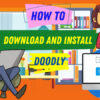Email Marketing
Beginners – Your Guide to Starting a Business from Scratch
How to Turn Your Business Idea Into Reality: 5 Steps to Get Started
Ever had a great business idea? Many of us dream about what could be, sharing ideas with friends and family, and imagining a better future. But often, that’s where it stops—for most, the idea remains a dream.
But you’re different. If you’re reading this, you’re likely in the 1% of people who want to take action. You’re ready to turn your idea into something real.
Here are five powerful tips to help you launch your business and start attracting customers.
1. Identify Your Ideal Customers
The best way to start is to know who your customers are. Russell Brunson, co-founder of ClickFunnels, emphasizes this in his book Traffic Secrets, noting that one of the biggest mistakes entrepreneurs make is overlooking their audience.
Entrepreneurs often focus solely on their product, assuming customers will follow. However, success starts by defining your dream customer—the people who need what you’re offering and are ready to buy.
Consider the advice of top business leaders:
- Jeff Bezos (Amazon): “We’re not competitor-obsessed; we’re customer-obsessed.”
- Sam Walton (Walmart): “The customer is the boss…they can fire everyone in the company by choosing to spend their money elsewhere.”
- Steve Jobs (Apple): “You’ve got to start with the customer experience and work back toward the technology.”
To pinpoint your ideal customer, think about their goals, challenges, and what makes them tick. A tool like ClickFunnels’ Customer Avatar Template can help you narrow down demographics, pain points, and values, which will be the foundation for your business.
2. Discover an Unmet Need
Businesses succeed by solving problems or fulfilling desires. People buy products or services primarily for three reasons: to improve their health, increase wealth, or enhance relationships.
Russell Brunson explains this concept with examples:
- Health: Nike’s “Just Do It” slogan doesn’t just sell shoes; it inspires physical well-being.
- Wealth: Apple’s “Think Different” appeals to those looking to innovate and succeed.
- Relationships: De Beers’ “A Diamond is Forever” taps into the desire for love and commitment.
Identify which of these core desires your product or service addresses. Understand what your customers crave, and build your business around fulfilling that need.
3. Craft Attention-Grabbing Hooks
In Traffic Secrets, Brunson highlights the “Hook, Story, Offer” approach. The hook is your chance to grab attention—it’s that eye-catching line or image that makes people pause and want to learn more.
Examples of effective hooks include:
- Email Subject Line: “The one mistake everyone makes when starting a business.”
- Social Media Post: “I doubled my income in 30 days—here’s how you can too.”
- YouTube Thumbnail: “This mistake cost me $10,000!”
A strong hook resonates with your audience’s needs and emotions, drawing them in to learn more.
4. Tell a Compelling Story
Once you’ve caught their attention, follow up with a story. Stories build emotional connections and make your business relatable. Russell Brunson calls this the “Epiphany Bridge”—the story that helps people understand your journey and the solution you’re offering.
Examples of brands that use storytelling effectively:
- Subway: Jared Fogle’s weight loss story became a symbol for healthy eating with Subway.
- Peloton: Customer stories of transformation inspire new users to achieve similar results.
Your story should connect with your audience’s needs and show how your product or service can make a difference in their lives.
5. Make a Great Offer
The final step in the “Hook, Story, Offer” framework is the offer. After capturing attention and building interest, it’s time to present something irresistible. If people are engaging with your content but not taking action, it may mean your offer needs a boost.
Ways to improve your offer:
- Tiered Pricing: Provide options with added value at different price points.
- Guarantees: A money-back guarantee reduces risk for the customer.
- Bonuses: Add extra value with bonuses like resources or consultations.
- Scarcity and Urgency: Limited-time discounts or bonuses create urgency to act quickly.
Start by offering something small—a free consultation, a sample product, or a simple signup. By testing and refining your approach, you can learn what resonates with your customers and improve your offers over time.
Final Thoughts: Focus on the Essentials
Starting a business can feel overwhelming. There’s endless advice on business plans, regulations, and funding, but the real key to success boils down to three things: a great hook, a compelling story, and a strong offer. Master these, and you’ll be well on your way to turning your idea into a thriving business.
Ready to start? ClickFunnels is a great tool for building a website, capturing leads, and automating emails—all without needing technical skills. Try it for 14 days and see how it can help you launch your business.
So don’t let your idea stay a dream—take action today!
>>>Join The One Funnel Away Challenge<<<






























